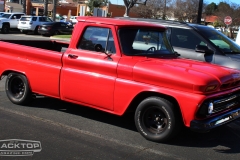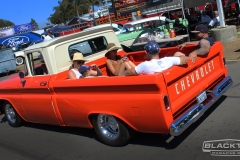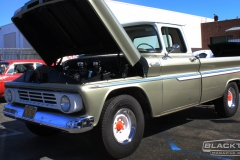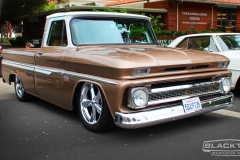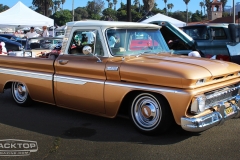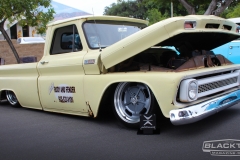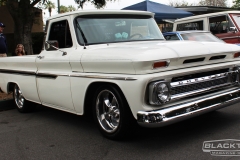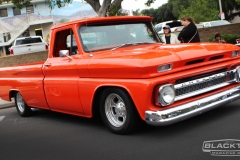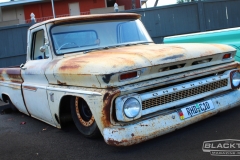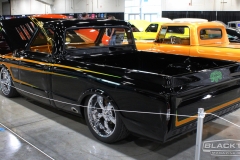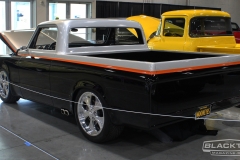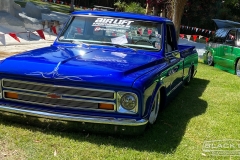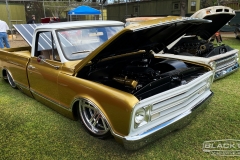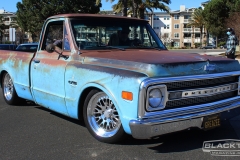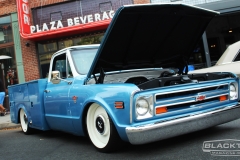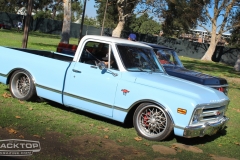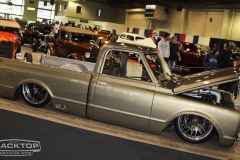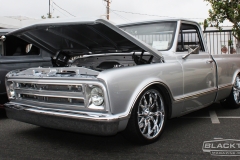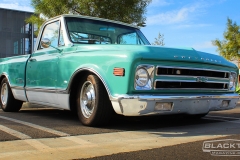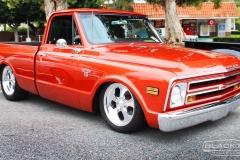A Blacktop Magazine C-10 Truck Show
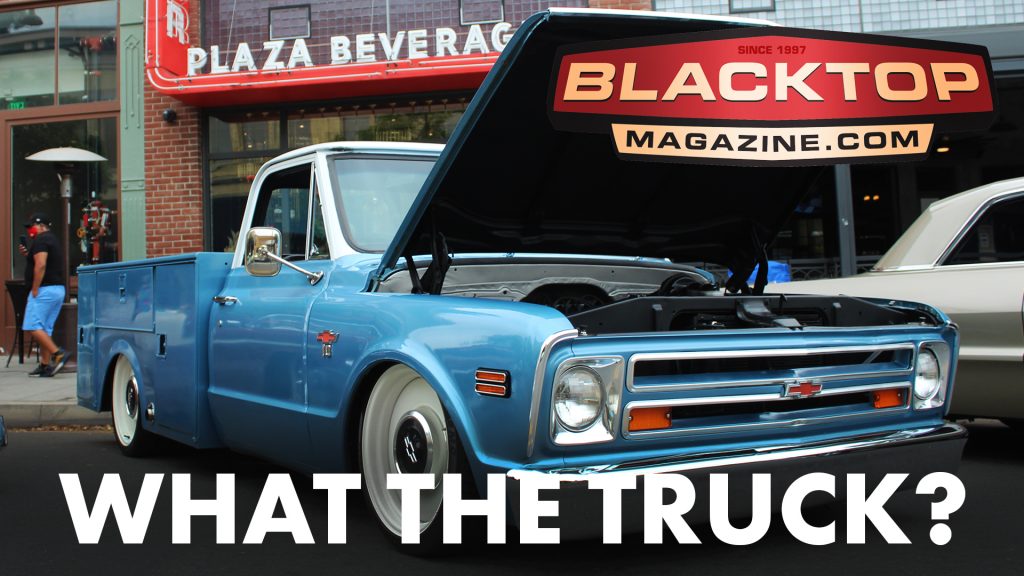
Exploring the first and second generations of Chevrolet Trucks from 1960-1972.
First Generation 1960-1966
Launched in the fall of 1959 as a 1960 model, the first-generation C-10 series debuted a number of design changes for General Motors light-truck design. Replacing the Task Force range, the C-10 was developed from the start as a truck chassis, no longer sharing commonality with the GM A-body platform. Though developed as a truck for the sake of durability, the C-10 adopted several features from cars into its design to increase its functionality. For pickup trucks, the C-10 trucks used a drop-center frame which allowed for a lower cab and lower center of gravity, and independent front suspension was paired with a coil-sprung rear axle. For 1963, front torsion bars were replaced by front coil springs (on two-wheel drive vehicles).
While the first generation would not undergo a comprehensive facelift or update, GM would make a series of gradual changes to the model line through its production. For 1962, the hood was redesigned, with a new windshield and A-pillar added to the cab for 1964.
In a break from General Motors tradition, this is one of the few generations of trucks not given an in-house moniker. The C/K nomenclature was developed by GMC; “C” denoted conventional cab, with “K” standing for 4×4 drive.
Second Generation 1967-1972
The second-generation C-10 was introduced for the 1967 model year. Designated the “Action Line” generation by General Motors, the C-10 largely carried over its drop-center ladder frame and its coil-sprung rear axle, but the body was redesigned from the ground up to improve its capability as a multi-purpose vehicle. Alongside a utilitarian vehicle intended for work or farm use, the C-10 was also offered with optional features carried over from Chevrolet sedans, including automatic transmissions, AM/FM radio, carpet, and two-tone paint.
While the Action Line would not undergo a definitive model revision through its production, the series underwent gradual changes on a biannual basis. The drivetrain line underwent multiple revisions, as a large-block V8 was offered for the first time in 1968. After 1969, GM switched entirely to Chevrolet-produced engines for C/K pickup trucks.
This generation marks the debut of the Chevrolet Cheyenne and GMC Sierra nameplates; introduced in 1971 and 1972, respectively, General Motors still uses both nameplates for full-size pickups in current production. The Action-Line pickup also served as the basis of ancestors of modern full-size SUVs, including the Chevrolet K5 Blazer, an open-body off-road vehicle, and the Chevrolet Suburban truck-based station wagon.
For 1973, GM replaced the Action Line trucks with the long-running Rounded Line series; the Action Line trucks are the final C-10 trucks offered solely with a two-door cab.

